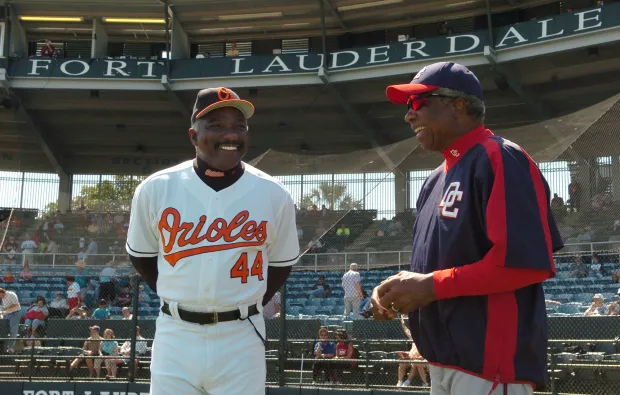Elrod Hendricks wore the Number 44 for the Orioles. In 2006, the Orioles honored Hendricks by wearing the number 44 on the sleeves of their uniforms.
No Oriole player has worn that particular number since Hendricks passed away, despite the fact that it hasn’t been formally retired.
Who was Elrod Hendricks
Elrod Jerome “Ellie” Hendricks was a professional baseball player and coach from the U.S. Virgin Islands.
He was a catcher in Major League Baseball from 1968 to 1979, most notably as a member of the Baltimore Orioles dynasty that captured the World Series in 1970 and three straight American League pennants from 1969 to 1971.
He also had stints with the New York Yankees (1976–1977) and Chicago Cubs (1972). He was admitted to the Baltimore Orioles Hall of Fame in 2001.
Hendricks played for the Orioles for the majority of his playing career, frequently playing on Earl Weaver’s successful squads.
From 1969 through 1971, when Hendricks and Andy Etchebarren shared catching duties, they went to three straight World Series. In 1969 and 1975, Hendricks had the best fielding percentage among all catchers in the American League.
During a crucial moment of the 1969 World Series, he was at-bat. In the fourth inning of Game 3 of the series, with the Mets leading 3-0 and two Orioles on base and two outs, Hendricks hit a hard-hit line shot into the gap in left-center field that most expected to go for extra bases, scoring two runs and bringing the Orioles back into the game.
Tommie Agee, the center fielder, raced down the ball on a dead sprint while playing the left-handed Hendricks to draw in right-center while stretching his left arm for a famous backhanded over-the-shoulder catch in the webbing of his glove.
With the World Champion Orioles in 1970, he had his most productive season, hitting 12 home runs and driving in 41 runs.
Hendricks contributed to Baltimore’s victory against the Cincinnati Reds in the 1970 World Series by going 4-for-11 (.364), driving in a total of four runs, deciding Game 2 with a two-run opposite-field double, and hitting a single home run in Game 1.
In addition, he played for the Yankees against Cincinnati in the 1976 World Series, joined the Orioles again as a bullpen coach after the 1977 campaign, and was a player coach in 1978 and 1979.






